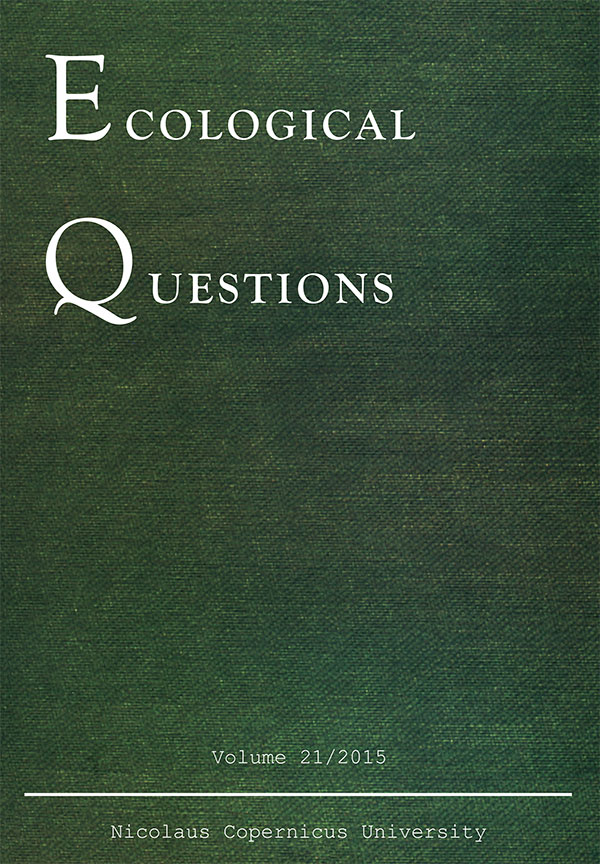Deforestation increases differences in morphology and properties of dune soils located on contrasting slope aspects in the Toruń military area (N Poland)
DOI:
https://doi.org/10.12775/EQ.2015.009Keywords
inland dunes, soils, forest succesion, heathlands, slope aspectAbstract
In a comparative research we investigated characteristics of soils situated on contrasting slope aspects (northern and southern) in two inland dune ecosystem types: 1. dunes overplanted with a pine production forest and 2. dunes deforested for military purposes, where for some decades natural succession has been the main driver for vegetation development. We found that afforested dune slopes were entirely occupied by Podzols slightly varying by degree of development in respect to slope aspect what clearly changed after deforestation. Removal of forest distinctly predisposed dry south-facing dune slopes for erosion, which affected in truncation of Podzols. Nowadays, deforested southern slopes are covered by regenerating, weakly developed soils – Arenosols; while conditions prevailing on deforested northern slopes preserve Podzols. Such situation implies distinct increase of primarily existing differences in characteristics of soils of opposite slope aspects such as moisture, temperature and organic carbon stocks.
References
Chojnacka J., Cyzman, W., Nienartowicz, A. & Deptuła, M., 2010, Variability of the structure and directions in the development of heaths and psammophilous grasslands within the artillery range near the city of Toruń,
Ecological Questions, 12: 87–125.
Jankowski M., 2010, Some aspects of site conditions of heathlands in the Toruń Basin, Ecological Questions, 12: 145–151.
Prusinkiewicz Z., 1961, Zagadnienia leśno-gleboznawcze na obszarze wydm nadmorskich Bramy Świny [Forest- pedological issues in a coastal dune area in the Świna Gate], Bad. Fizjogr. nad Polską Zach., 7: 25–127.
Seibert J., Stendahl J., Sørensen R., 2007, Topographical influences on soil properties in boreal forests, Geoderma, 141: 139–148.
Sewerniak P., Mendyk Ł., 2015, Secondary succession of trees in the dune landscape of the “Glinki” long-term research area – analysis with GIS, For. Res. Pap., 76(2): 122–128.
Sewerniak P., Bednarek R. & Szymańska A., 2011, Preliminary studies on the influence of dune-slope exposure on a pine forest ecosystem in the Toruń Basin, For. Res. Pap. 72: 37–46.
Szafranek A., 1992, Wpływ rzeźby terenu i skały macierzystej na kształtowanie się gleb z piaskowców dewońskich i triasowych regionu świętokrzyskiego [The effect of the area relief and the parent rock on formation of soils developed from Devonian and Triassic sandstones of the Świętokrzyski region], Rocz. Glebozn. 1/2: 121–131.
Wójcik G., Marciniak K., 2006, Klimat [Climate], [in:]
L. Andrzejewski, P. Weckwerth, Sz. Burak (eds.), Toruń i jego okolice. Monografia przyrodnicza [The city of Toruń and the surroundings, Nature monograph], Wyd. UMK, Toruń: 99–128.
Downloads
Published
How to Cite
Issue
Section
Stats
Number of views and downloads: 610
Number of citations: 8



